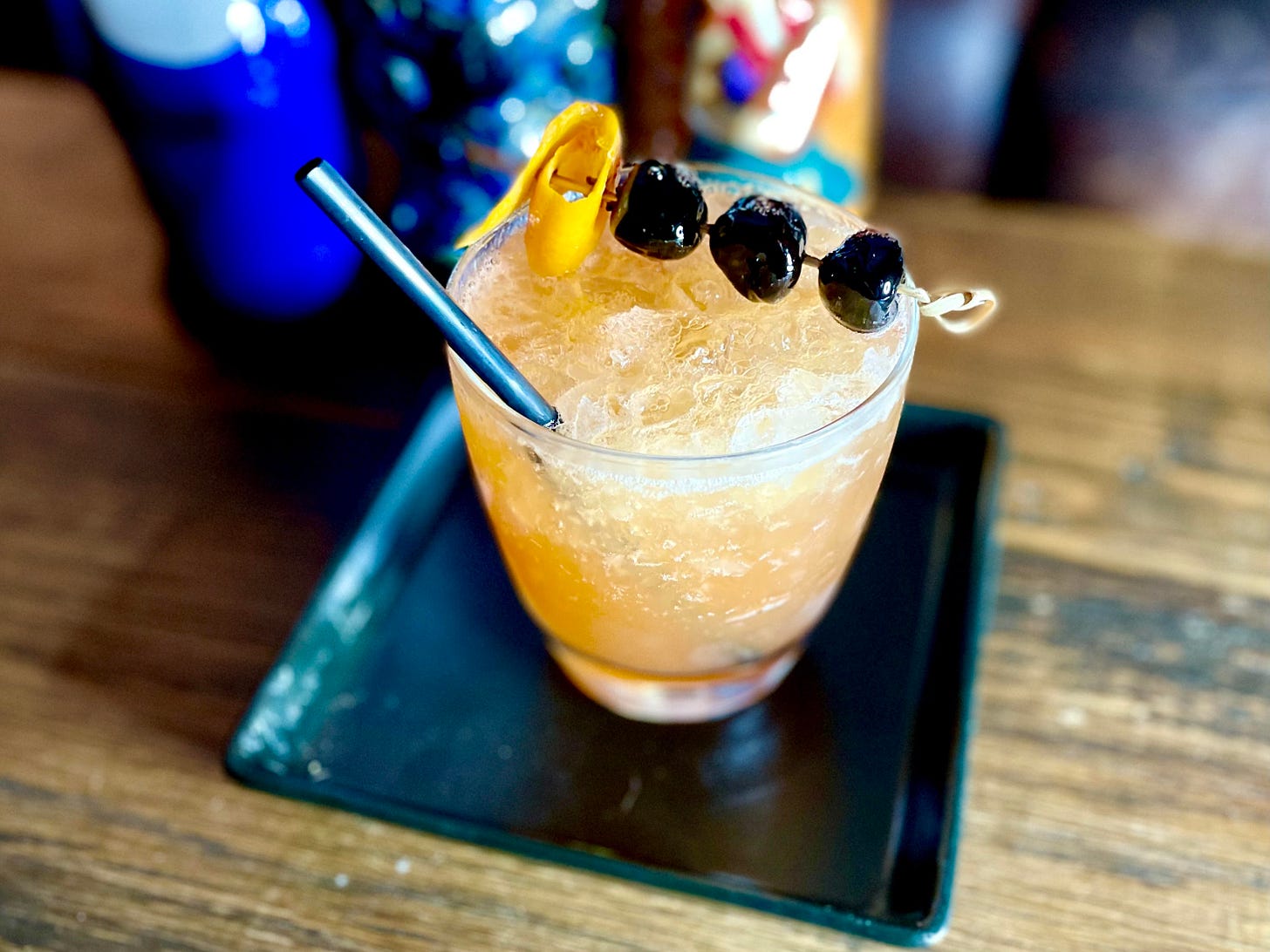A Rich, Boozy, Sweet Tiki Drink With and Without Orange Juice
A Donn Beach classic, two ways.
Freshly squeezed orange juice is one of life’s great pleasures. I typically make it a few times a month using oranges that were first stripped of their peels for garnish. Keep the oranges in the refrigerator before you juice them, then strain the juice and consume it immediately after pressing. Unless you are making Negronis by the dozen — and thus peeling a whole lot of oranges — you’ll probably only end up with a few ounces at a time. That’s perfectly fine. Like a classic cocktail, orange juice is best served and appreciated in small, condensed volumes.
Yet as wonderful as fresh orange juice is on its own, it’s also somewhat tricky to use in cocktails, to the point where some bars rarely ever use it. The issue with orange juice is that although it’s acidic, somewhat like lemons and limes, it’s also quite sweet, almost like a sugar syrup. That makes it somewhat difficult to balance. The texture, meanwhile, is heavier than a typical citrus juice, even if you strain it. And on top of everything else, fresh orange juice can be quite inconsistent, varying based on geography and time of year. You never quite know what you’re going to get.
It’s not an accident that one of the most polarizing cocktails I’ve ever published in this newsletter is the Blood and Sand, a four-part concoction blending scotch, Cherry Heering, and sweet vermouth with orange juice. Lots of bartenders don’t like this drink. Honestly, I have complicated feelings about this drink. It’s a hard one to get just right. You can try to reengineer it — or you can just completely give up on serving drinks with orange juice.
Avoiding orange juice is relatively easy if you’re mostly focused on Old Fashioned/Manhattan/Daiquiri-adjacent classics. There’s just not a lot of orange juice in that class of cocktails.
But avoiding OJ entirely is much, much harder if you want to make tiki drinks.
Folks, I want to make tiki drinks — and I think you should too.
Fortunately, there are workarounds. In particular, you can often substitute orange liqueur for orange juice, and sometimes you can produce a drink that is even better because of the substitution.
So this week, we’ll look at two ways to make the Three Dots and a Dash, a rich, decadent, sweet, decadently complex tiki classic that’s one of my personal favorite cocktails from the tiki universe. It’s also a good test-case for the orange juice problem: The classic recipe calls for OJ, but I think there’s a very good way to make it without.
Serious Tiki
The Three Dots and a Dash is one of those cocktails that hardcore tiki heads are quite familiar with, but isn’t widely known outside of tiki fanatic circles.
Sure, there’s a bar in Chicago named after the drink, and recipes have been printed in a number of tiki books. (I have at least three books with entries for the drink.) But walk into an ordinary cocktail bar and ask the bartender for a Three Dots and a Dash and you’re likely to receive an apology for not being able to make the drink — or perhaps some quick recipe Googling, followed by a subpar rendition.
But a well-made Three Dots and a Dash represents the best of what tiki drinks have to offer.
Created by tiki godfather Donn Beach, it’s named after the Morse code for the letter V, which was used to denote victory by the Allies in World War II. Beach called his tropical drinks “rhum rhapsodies,” and this drink surely fits the bill. It’s a tropical rum-blend cocktail layered with an incredibly satisfying blend of sweet, sour, and a hint of warming spice. In many ways it resembles a classic Mai Tai, but if anything I find this drink richer, more complex, more thrilling. Every sip is a journey.
And you create that journey by stacking a bunch of different elements and making them work together in interlocking flavor layers.



